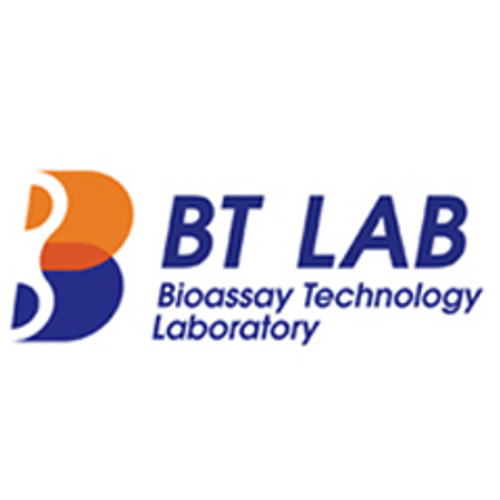Product Description
Human Mannma binding lectin receptor (MBLR) ELISA Kit | AE63030HU | Abebio
Species Reactivity: Human (Homo sapiens)
Abbreviation: MBLR
Alternative Name: N/A
Application: ELISA
Range: Request Information
Sensitivity: Request Information
Intra-Assay: ≤5.1%
Inter-Assay: ≤9.4%
Recovery: 0, 89
Sample Type: Serum, Plasma, Other biological fluids
Detection Method: Sandwich
Analysis Method : Quantitive
Test Principale: This assay employs a two-site sandwich ELISA to quantitate MBLR in samples. An antibody specific for MBLR has been pre-coated onto a microplate. Standards and samples are pipetted into the wells and anyMBLR present is bound by the immobilized antibody. After removing any unbound substances, a biotin-conjugated antibody specific for MBLR is added to the wells. After washing, Streptavidin conjugated Horseradish Peroxidase (HRP) is added to the wells. Following a wash to remove any unbound avidin-enzyme reagent, a substrate solution is added to the wells and color develops in proportion to the amount of MBLR bound in the initial step. The color development is stopped and the intensity of the color is measured.
Product Overview: PCGF6 contains a RING finger motif, which is most closely related to those of polycomb group (PcG) proteins RNF110/MEL-18 and BMI1. PcG proteins are known to form protein complexes and function as transcription repressors. This protein has been shown to interact with some PcG proteins and act as a transcription repressor. The activity of this protein is found to be regulated by cell cycle dependent phosphorylation. Alternatively spliced transcript variants encoding different isoforms have been identified.Mouse and human MBLR share 87% sequence identity, and the central domain of MBLR shares 38% identity with the corresponding regions of MEL18 and BMI1. A minor transcript of 4.5 kb was also expressed in some tissues. RT-PCR confirmed ubiquitous expression.
Stability: The stability of ELISA kit is determined by the loss rate of activity. The loss rate of this kit is less than 5% within the expiration date under appropriate storage condition. The loss rate was determined by accelerated thermal degradation test. Keep the kit at 37°C for 4 and 7 days, and compare O.D.values of the kit kept at 37°C with that of at recommended temperature. (referring from China Biological Products Standard, which was calculated by the Arrhenius equation. For ELISA kit, 4 days storage at 37°C can be considered as 6 months at 2 - 8°C, which means 7 days at 37°C equaling 12 months at 2 - 8°C) .
 Euro
Euro
 USD
USD
 British Pound
British Pound
 NULL
NULL








